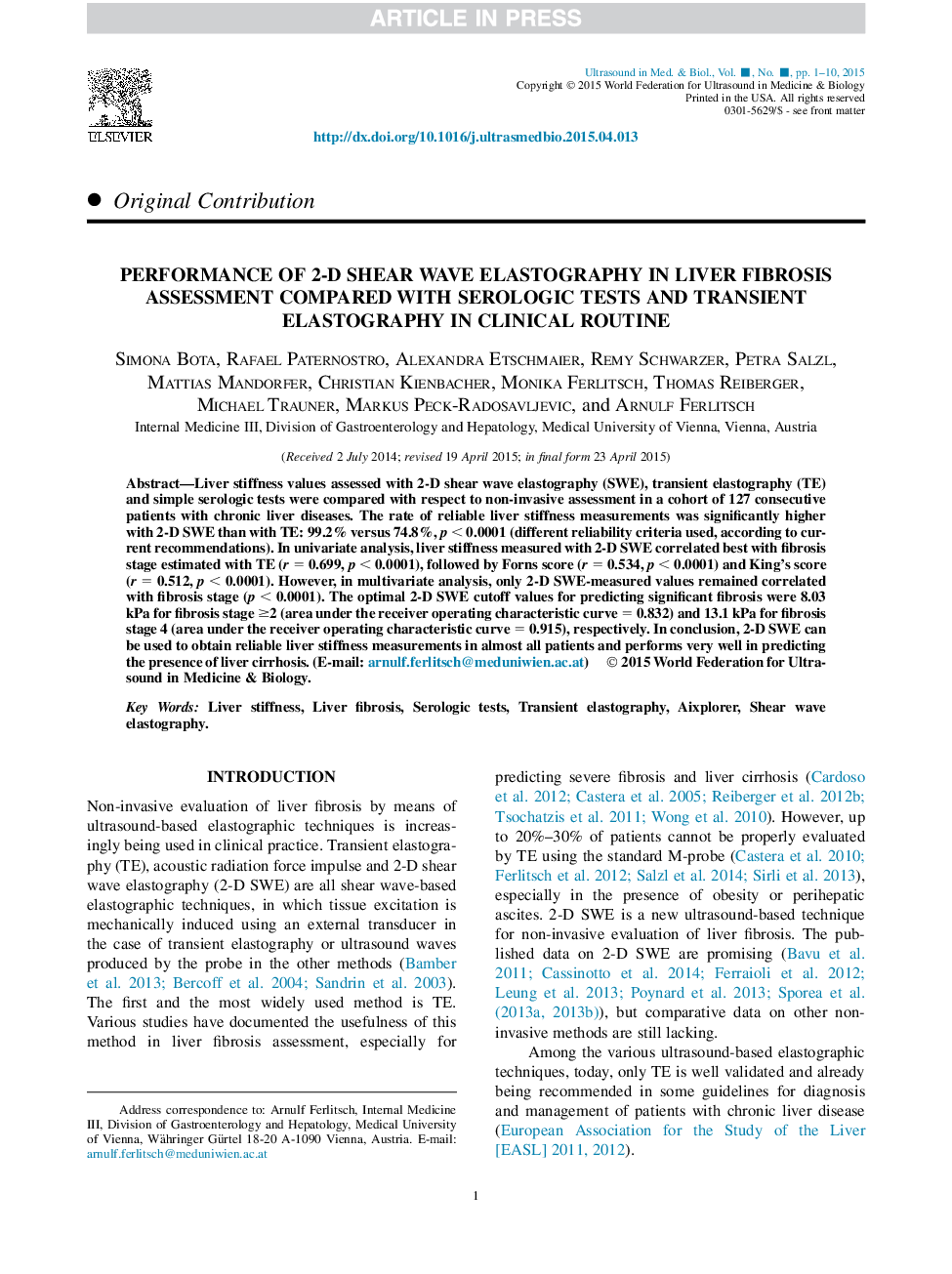| Article ID | Journal | Published Year | Pages | File Type |
|---|---|---|---|---|
| 1760275 | Ultrasound in Medicine & Biology | 2015 | 10 Pages |
Abstract
Liver stiffness values assessed with 2-D shear wave elastography (SWE), transient elastography (TE) and simple serologic tests were compared with respect to non-invasive assessment in a cohort of 127 consecutive patients with chronic liver diseases. The rate of reliable liver stiffness measurements was significantly higher with 2-D SWE than with TE: 99.2% versus 74.8%, p < 0.0001 (different reliability criteria used, according to current recommendations). In univariate analysis, liver stiffness measured with 2-D SWE correlated best with fibrosis stage estimated with TE (r = 0.699, p < 0.0001), followed by Forns score (r = 0.534, p < 0.0001) and King's score (r = 0.512, p < 0.0001). However, in multivariate analysis, only 2-D SWE-measured values remained correlated with fibrosis stage (p < 0.0001). The optimal 2-D SWE cutoff values for predicting significant fibrosis were 8.03 kPa for fibrosis stage â¥2 (area under the receiver operating characteristic curve = 0.832) and 13.1 kPa for fibrosis stage 4 (area under the receiver operating characteristic curve = 0.915), respectively. In conclusion, 2-D SWE can be used to obtain reliable liver stiffness measurements in almost all patients and performs very well in predicting the presence of liver cirrhosis.
Related Topics
Physical Sciences and Engineering
Physics and Astronomy
Acoustics and Ultrasonics
Authors
Simona Bota, Rafael Paternostro, Alexandra Etschmaier, Remy Schwarzer, Petra Salzl, Mattias Mandorfer, Christian Kienbacher, Monika Ferlitsch, Thomas Reiberger, Michael Trauner, Markus Peck-Radosavljevic, Arnulf Ferlitsch,
